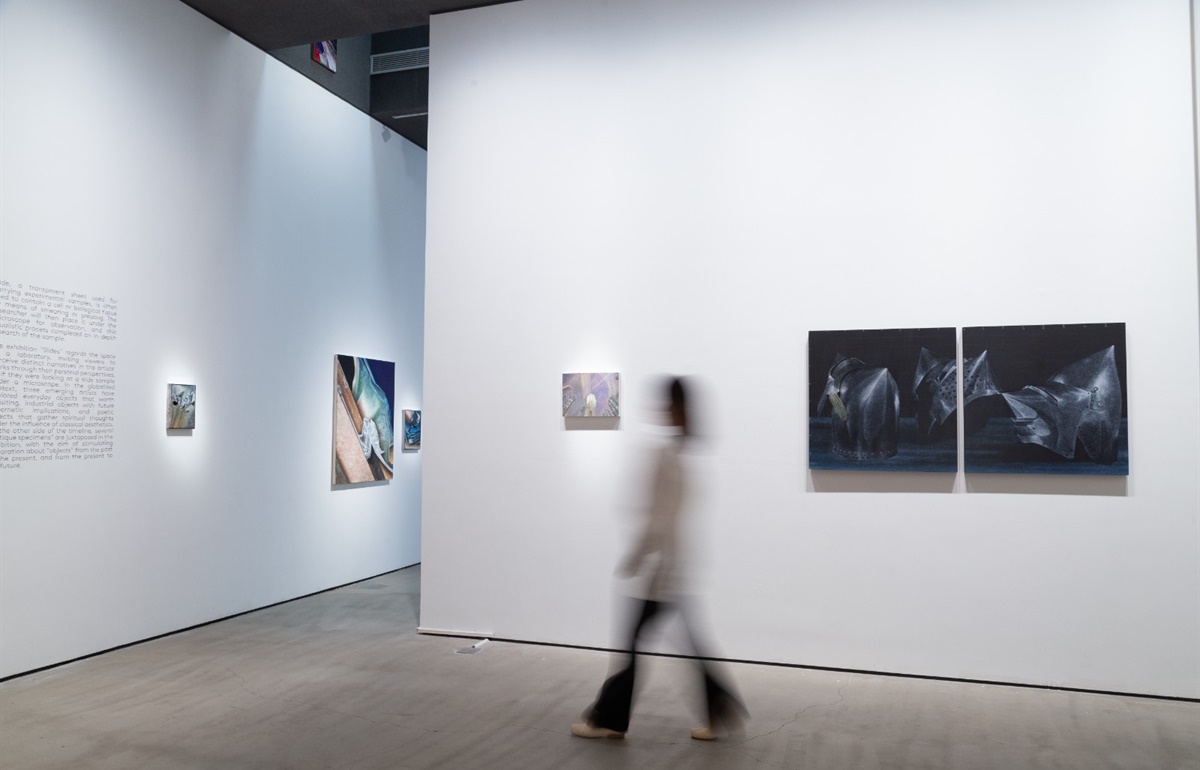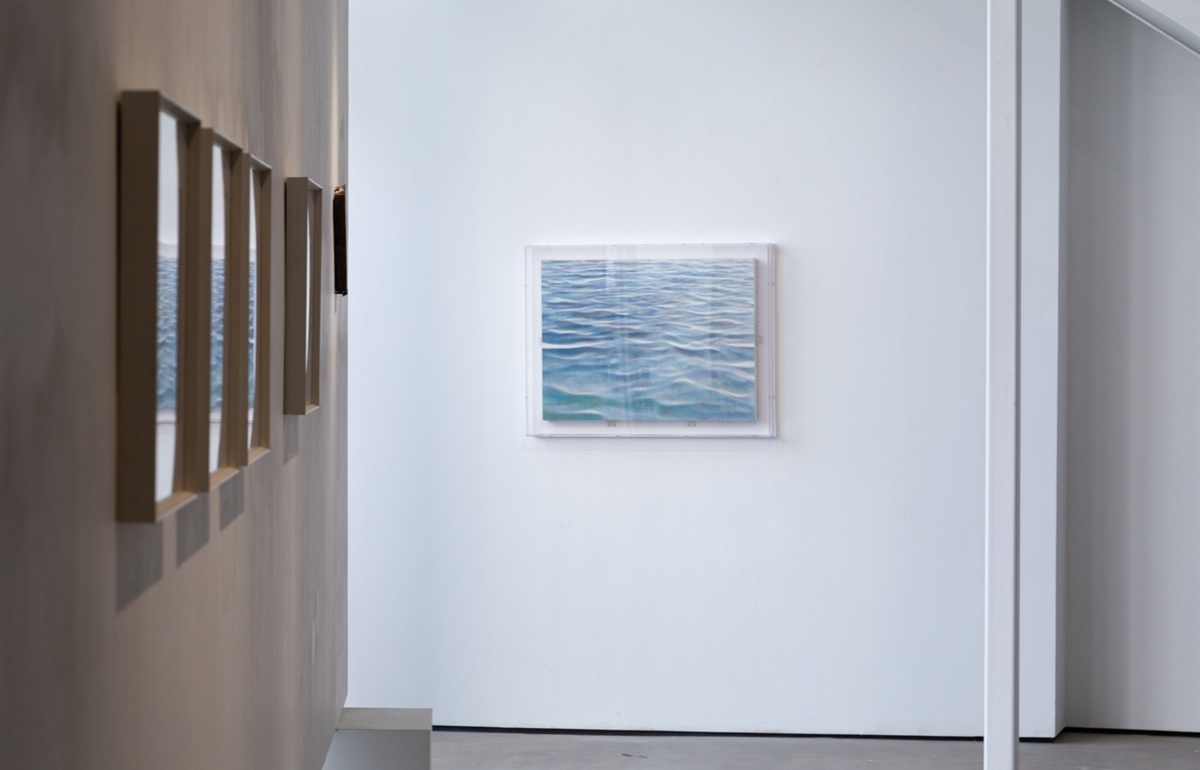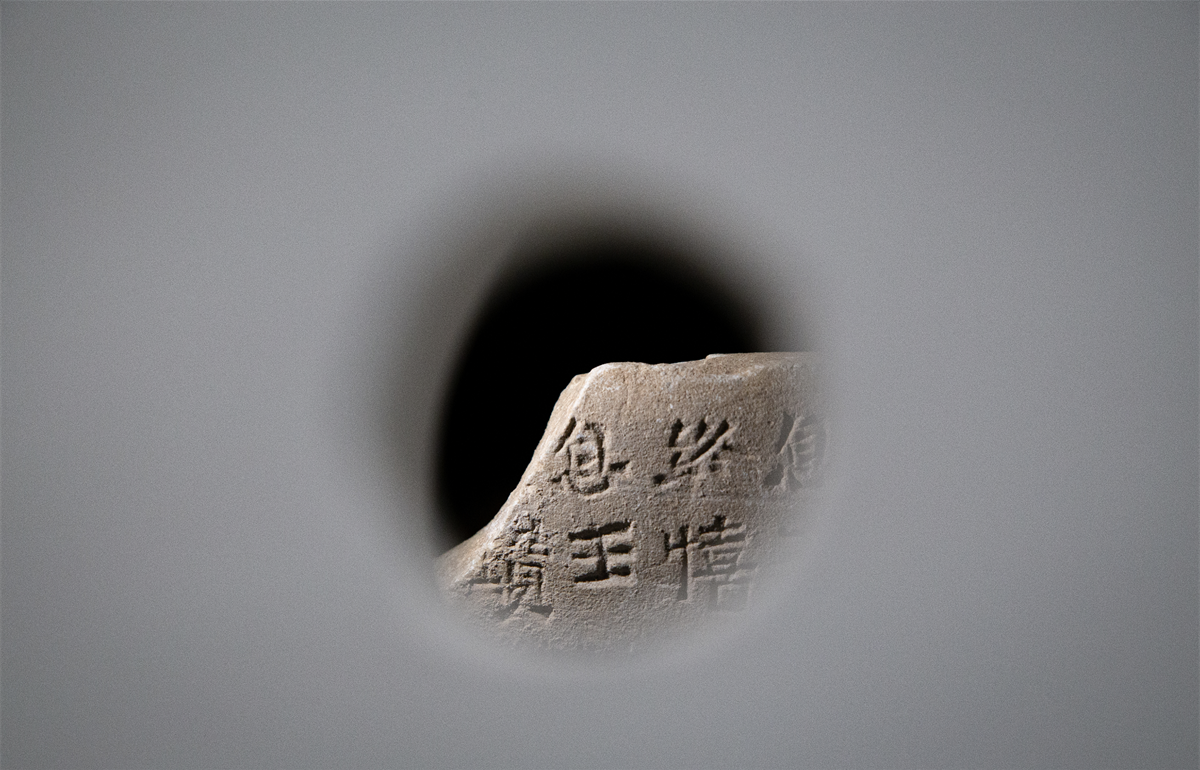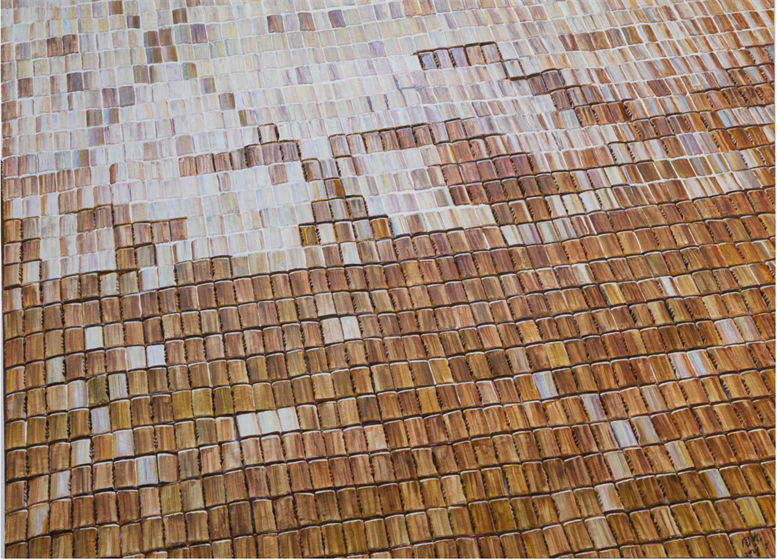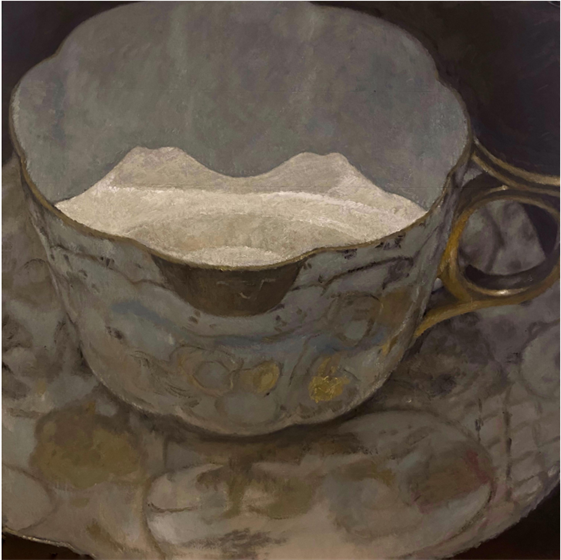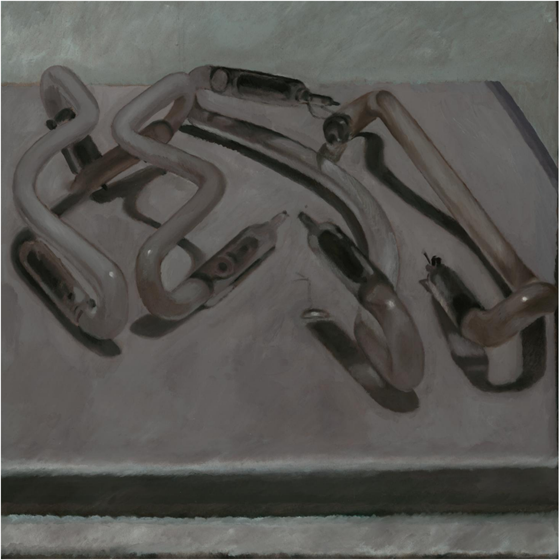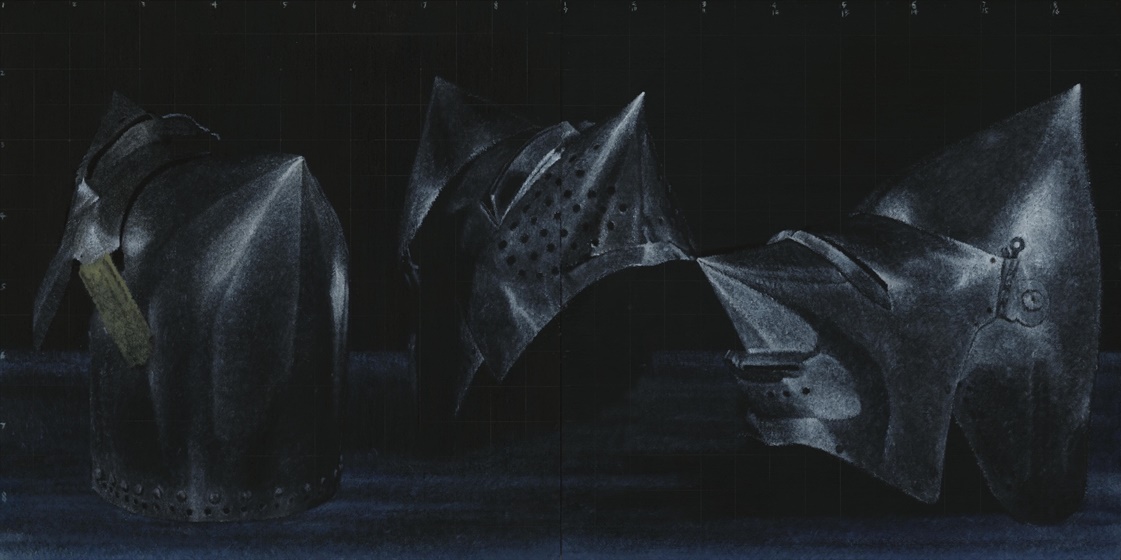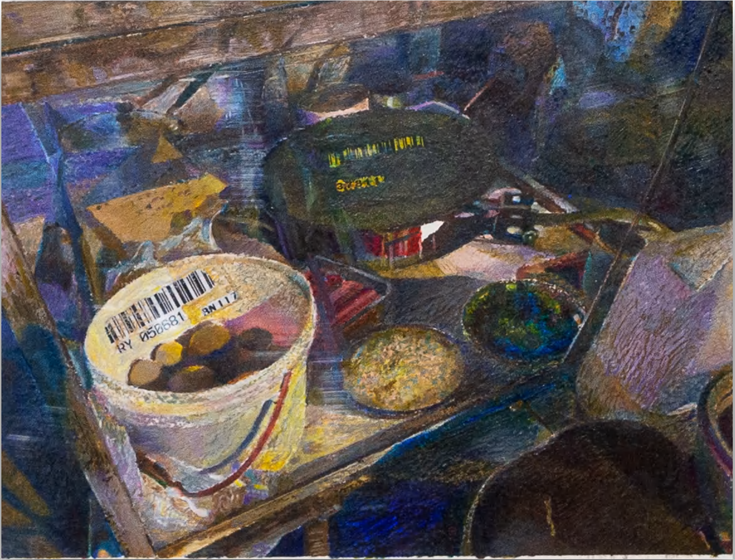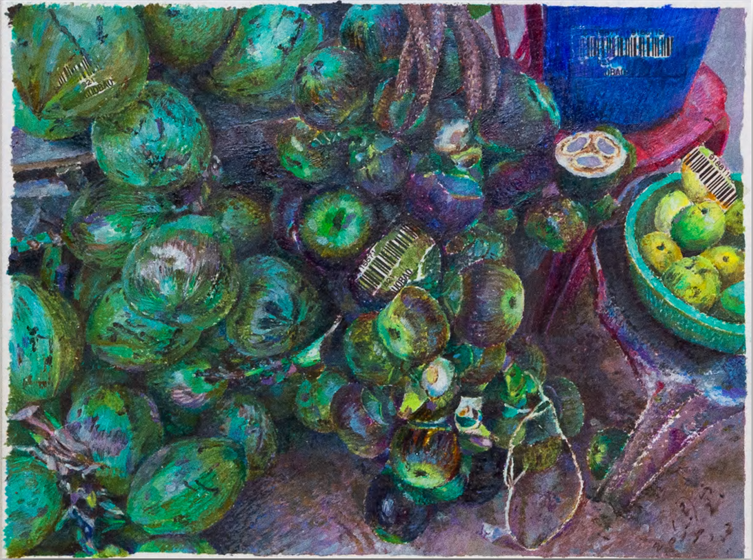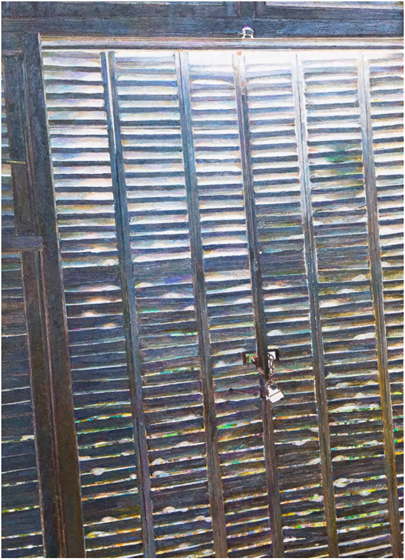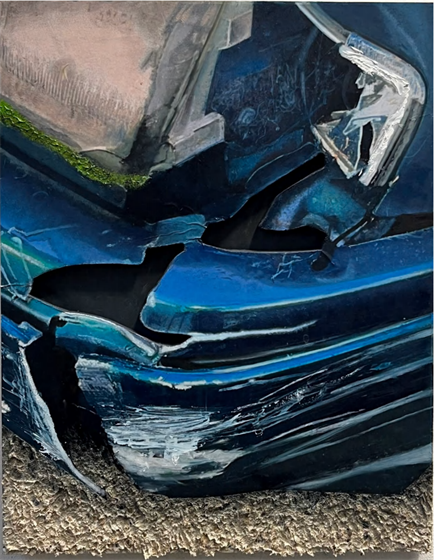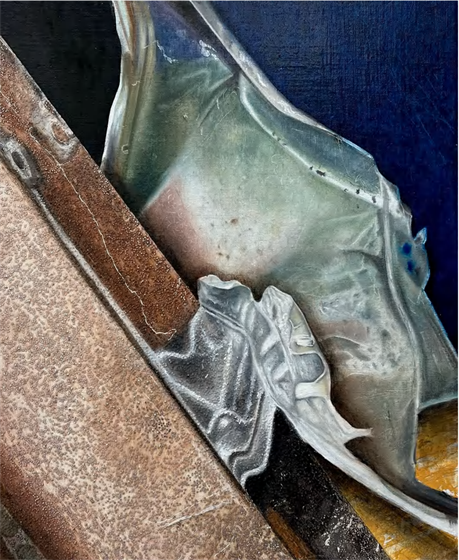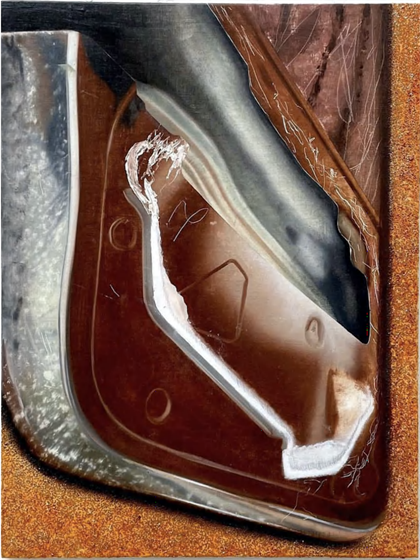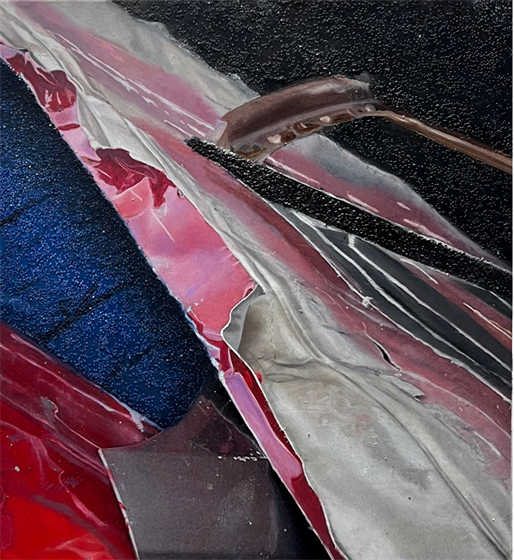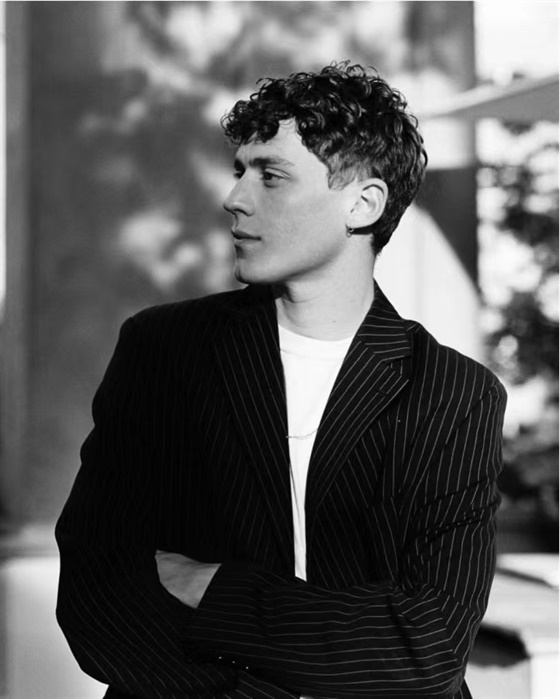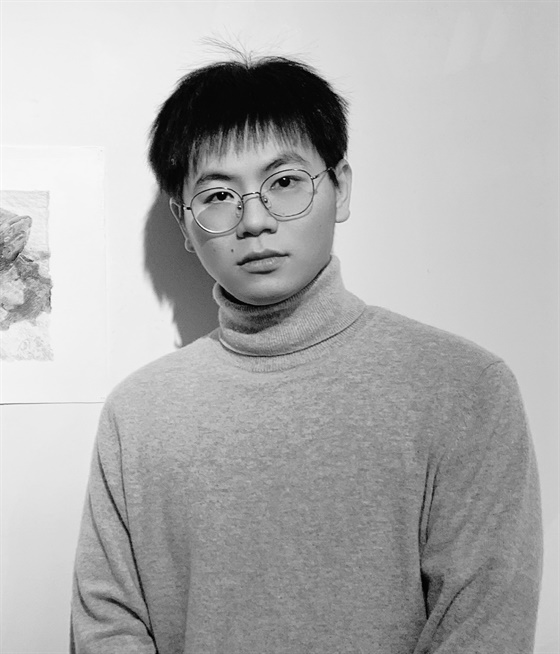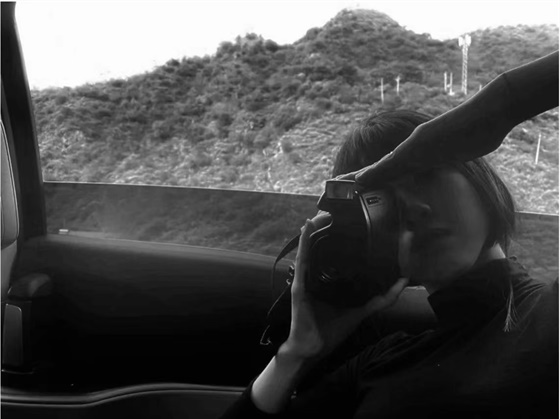At the start of 2023, W.ONESPACE is honored to present “Slides,” the trio exhibition of artists Chen Guobao, Johannes Bosisio and Yu Feier, to reveal their understanding and interpretation of "objects" through different perspectives in recent years. In as globalized context, three emerging artists bring their own reflections to explore everyday objects that are mundane but worth revisiting, industrial objects that are fragmented but with future cybernetic implications, and poetic objects that gather spiritual thoughts under the influence of classical aesthetics.
A microscope slide is a transparent sheet that carries a sample of cells or tissue sections. For research purposes, it may be placed under the microscope by means of a smear or press. In the field of biological research, compared to the short lifespan of human beings, slide specimens may be preserved permanently, remaining a powerful carrier for people to explore the microscopic world for a long time. The three artists, Chen Guobao, Johannes Bosisio and Yu Feier, observed and experienced diverse objects through different perspectives, as if they were slicing the observed objects in different ways, in order to reveal and explore the larger truth and connotation behind the samples. At the same time, W.ONESPACE also echoes and juxtaposes the creative qualities of each artist with antique objects, and synthesizes documentary materials to restore the imagination of historical fragments projected behind an artifact or even a fragmentary specimen. In this special exhibition, through these slides from different periods, viewers have the chance to observe and understand "objects" from different people and different perspectives, from the past to the present, and from the present to the future.
Ordinary objects have the function of carrying daily trivial information, and the evolving times are also imprinted on these seemingly inconspicuous objects. Using oil pastels as his main medium, Chen Guobao continues to focus on depicting the fragments that frequently appear in his life, such as receipts, food, landscapes, etc., and he always brands these objects with a strong personal presence. Every time he paints, the artist dominates the picture with a clear perception of color and exquisite control of composition, using this difficult medium with ease and presenting his personal reflections on objects and memories in the superposition of brushstrokes. Whether or not frequently appearing daily objects can be re-examined by people is a special challenge for the artist, and creating a sense of contrast in visual experience is also an important focus of his artistic creation.
Industry and machinery, as one of the representative objects of the frontier of technological development, are constantly referred to in the history of human civilization, whether in the use of technology or in literary imagination and artistic creation. Johannes Bosisio has developed a unique direction in the field of human-computer interaction by using broken metal as the master theme, and Natural Cyborg and mechanical deconstruction as the theoretical background. He aims to depict the local details of mechanical metal construction. In Johannes's paintings, the close-up industrialized metal part is similar to the material structure observed through the slide, which has become the carrier for his exploration of modern technology and retranslation of postmodernism through his art practice. With such a visual impact, these parts seem to have complex lives, and the empowerment of humanism adds a layer of self-examination to the understanding of machinery.
The spiritual exploration of objects is also continuously extended in Yu Feier's creations. Influenced by the aesthetics of traditional Chinese painting and calligraphy and painting theory, the artist permeates the honeycomb cardboard with condensed and balanced textures in an overlay of brush strokes, trying to extract the pure temperament of the object itself. Feier’s close-up subjects have a unique sharp aura, whether they are human limbs or partial objects, and her sense of detachment and position as a calm spectator make the paintings themselves have the possibility of being deconstructed in multiple ways. As a time-carrier, the artistic image covers a slice of the artist's thoughts within a certain period of time, and what is shown in the artwork is not the result of the artist's thinking, but the process of thinking. This is an experiment about precision and intuition. The artist gradually completes the process of dissecting herself through gazing, breathing, and feeling, and her creation also manifests the "spirit"(神)she has always contemplated and comprehended between the collision of nothingness and reality.
Through their respective perspectives, the three emerging artists contemplate different aspects of objects in the present time and space. Their diverse practices constitute a very different but homogeneous field of study, while the “microscope slides" of their individual artistic creations gradually accumulate as experimental samples and show us the objects and the world from multiple perspectives. As a completed "relic" sample, they allow the viewer to read and experience the artist's personal or contemporary legacy through the lens of personal experience, thus stimulating a more poignant and authentic realization.
A microscope slide is a transparent sheet that carries a sample of cells or tissue sections. For research purposes, it may be placed under the microscope by means of a smear or press. In the field of biological research, compared to the short lifespan of human beings, slide specimens may be preserved permanently, remaining a powerful carrier for people to explore the microscopic world for a long time. The three artists, Chen Guobao, Johannes Bosisio and Yu Feier, observed and experienced diverse objects through different perspectives, as if they were slicing the observed objects in different ways, in order to reveal and explore the larger truth and connotation behind the samples. At the same time, W.ONESPACE also echoes and juxtaposes the creative qualities of each artist with antique objects, and synthesizes documentary materials to restore the imagination of historical fragments projected behind an artifact or even a fragmentary specimen. In this special exhibition, through these slides from different periods, viewers have the chance to observe and understand "objects" from different people and different perspectives, from the past to the present, and from the present to the future.
Ordinary objects have the function of carrying daily trivial information, and the evolving times are also imprinted on these seemingly inconspicuous objects. Using oil pastels as his main medium, Chen Guobao continues to focus on depicting the fragments that frequently appear in his life, such as receipts, food, landscapes, etc., and he always brands these objects with a strong personal presence. Every time he paints, the artist dominates the picture with a clear perception of color and exquisite control of composition, using this difficult medium with ease and presenting his personal reflections on objects and memories in the superposition of brushstrokes. Whether or not frequently appearing daily objects can be re-examined by people is a special challenge for the artist, and creating a sense of contrast in visual experience is also an important focus of his artistic creation.
Industry and machinery, as one of the representative objects of the frontier of technological development, are constantly referred to in the history of human civilization, whether in the use of technology or in literary imagination and artistic creation. Johannes Bosisio has developed a unique direction in the field of human-computer interaction by using broken metal as the master theme, and Natural Cyborg and mechanical deconstruction as the theoretical background. He aims to depict the local details of mechanical metal construction. In Johannes's paintings, the close-up industrialized metal part is similar to the material structure observed through the slide, which has become the carrier for his exploration of modern technology and retranslation of postmodernism through his art practice. With such a visual impact, these parts seem to have complex lives, and the empowerment of humanism adds a layer of self-examination to the understanding of machinery.
The spiritual exploration of objects is also continuously extended in Yu Feier's creations. Influenced by the aesthetics of traditional Chinese painting and calligraphy and painting theory, the artist permeates the honeycomb cardboard with condensed and balanced textures in an overlay of brush strokes, trying to extract the pure temperament of the object itself. Feier’s close-up subjects have a unique sharp aura, whether they are human limbs or partial objects, and her sense of detachment and position as a calm spectator make the paintings themselves have the possibility of being deconstructed in multiple ways. As a time-carrier, the artistic image covers a slice of the artist's thoughts within a certain period of time, and what is shown in the artwork is not the result of the artist's thinking, but the process of thinking. This is an experiment about precision and intuition. The artist gradually completes the process of dissecting herself through gazing, breathing, and feeling, and her creation also manifests the "spirit"(神)she has always contemplated and comprehended between the collision of nothingness and reality.
Through their respective perspectives, the three emerging artists contemplate different aspects of objects in the present time and space. Their diverse practices constitute a very different but homogeneous field of study, while the “microscope slides" of their individual artistic creations gradually accumulate as experimental samples and show us the objects and the world from multiple perspectives. As a completed "relic" sample, they allow the viewer to read and experience the artist's personal or contemporary legacy through the lens of personal experience, thus stimulating a more poignant and authentic realization.

